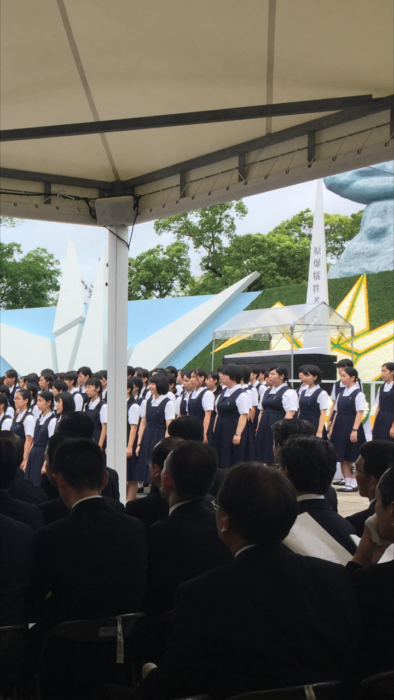
Of course, in great wars terrible things happen on all sides, but Japan is very conscious of its status as the only country to have experienced nuclear weapons. Visiting the museums in both cities, you can see the particular horror of atomic bombs, and their long-lasting effects. In both cities the mayors read out a peace declaration calling for an end to nuclear weapons. Mayors from cities around the world were in attendance, including Cllr Eddy Newman from Manchester, whom I sat with in Nagasaki.
So there were many calls in support of the treaty to abolish nuclear weapons, which was endorsed by a large number of countries at the UN last month. In newspaper interviews, I explained why although Britain wants to see a world without nuclear weapons eventually, we and other responsible nuclear powers believe that the only effective way of achieving this is through gradual progress under the Nuclear Non-Proliferation Treaty.
Whilst in Western Japan, I took the opportunity to visit a number of other cities. In Hagi, a beautiful former samurai castle town, I addressed the inaugural meeting of the new local Japan Britain Society. Hagi is proud of its links with Britain through the “Choshu 5”students who travelled to London in 1863, and returned to become leaders of the modernisation process which transformed Japan in the fifty years after the Meiji Restoration (which celebrates its 150th anniversary next year).
In Shimonseki, one of the first ports to open to the West, after Japan’s 220 years of self-imposed isolation ended, I met the Mayor, and was given a tour of the handsome former British Consulate building, now a museum and restaurant. Nearby stands an iconic London double-decker bus, another reminder of Britain.
In Kumamoto, I called on the Deputy Governor and Mayor, and had the opportunity to visit sites affected by the significant earthquake last year, which killed about 50 people and left 40,000 homeless. I inspected the damage at Kumamoto Castle, one of Japan’s finest, where reconstruction will take up to 20 years. They hope that the main donjon will be in shape by 2019, when Kumamoto will be one of the host cities for the Rugby World Cup. At Mashiki, the worst affected site, I visited a temporary housing facility for people displaced by the earthquake, and chatted with student volunteers. Whilst in Kumamoto, I also popped into the Prefectural Art Museum for a tour of a Turner exhibition on loan from the National Museum of Wales.
My final stop was Kagoshima, home of the powerful Satsuma clan, who first resisted the 19th century arrival of the foreign “barbarians”, fighting a skirmish against the British, then decided to send the “Satsuma Students” to Britain to learn about the industrial revolution, and became the driving force for the Meiji Restoration. I called on the current head of the Shimadzu family, hereditary leader of the Satsuma, at his beautiful historic house, now a museum. He showed me pictures of his grandfather welcoming the future Edward VIII. I visited the museum next door which showcases 19th century industrial machinery brought from Britain and successfully adapted by the Japanese, and is now a world heritage site. In my speech to the Kagoshima Japan British Society, I described how industrial collaboration continues to go from strength to strength today.
